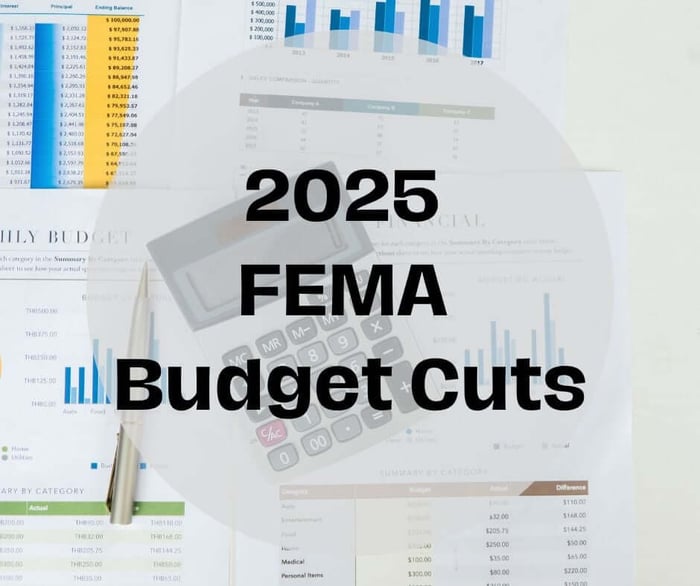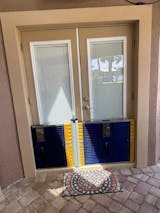Table of Contents
Imagine this: Torrential rain floods your neighborhood. You grab your phone, dial FEMA—only to hear, “We’re backlogged.” By the time help arrives, your floors have warped, mold has set in, and your insurance claim is stuck in red tape. You simply had no time to react, to protect, to install flood barriers.
In April 2025 alone, FEMA slashed $293 million out of the $312 million Congress had okayed for Florida’s hurricane relief and flood‑mitigation projects—nearly 94 percent of that funding gone overnight. At the same time, flagship resilience programs like the BRIC grants (which support pre‑disaster mitigation) were abruptly canceled, trimming FEMA’s toolkit just as climate‑driven disasters surge.
And under the conservative “Project 2025” blueprint, FEMA could be relegated to covering just 25 percent of future disaster costs—pushing the remaining burden onto cash‑strapped states and homeowners alike. Meanwhile, what was once a “1‑in‑100 year” flood is now happening every 8–10 years in many parts of the country.
Homeowners can’t afford to wait on a system that’s being hollowed out. The only way to safeguard your property—and your wallet—is proactive flood protection. Like flood barriers, for example. Think of it as building a moat around your home: you’re in charge, you’re prepared, and you’re not relying on someone else to sound the alarm.
1. The New Reality: Why FEMA Can’t Save Your Home
Budget Strain
- Bare-bones coffers: As of February 28, 2025, FEMA’s Disaster Relief Fund had only $534 million in uncommitted allocations to cover every major storm, flood, and wildfire, down from over a billion just a year ago.
- Staff purges: The agency has also seen hundreds of veteran staffers let go, including experts in hazard mitigation, flood insurance, and long‑term recovery—key players in getting you back on your feet after disaster strikes.
- Competing priorities: While floods dominate headlines, FEMA is stretched thin managing 97 major disasters and 9 emergency declarations simultaneously, plus wildfire season and aging infrastructure crises all at once.
Relying on FEMA today is like hiring an understaffed, underfunded lifeguard station when you’re already treading water.
Delayed Aid
- Red‑tape marathon: In communities hit by Hurricane Helene, survivors waited more than five months for meaningful FEMA assistance—some didn’t even get a callback from FEMA for four months straight.
- Household hardship: During that waiting game, floors rot, mold spreads, and families face emotional stress—and may even dip into savings or rack up credit‑card debt just to stay afloat.
Insurance Gaps
- Rising premiums: Flood insurance costs are climbing, with the average water‑damage claim now nearly $14,000—and that’s just the tip of the iceberg.
- Coverage exclusions: Standard homeowners policies often exclude flood damage altogether, forcing you to buy separate coverage that may still leave you on the hook for deductibles and exclusions.
Counting on FEMA is like waiting for a lifeguard when you’ve already slipped under the waves—and your insurance policy is a flotation ring with a big hole in it.
Φράγμα πόρτας φραγμού πλημμύρας

$949.00
DAM EASY® FLOOD BARRIER ΠΟΡΤΑ ΦΡΑΓΜΑ Οι πλημμύρες γίνονται πιο συχνές σε όλο τον κόσμο. Αυτό που κάποτε ήταν ένα φαινόμενο 100 ετών είναι τώρα μια εποχική τάση που πρέπει να αντιμετωπίσουν οι ιδιοκτήτες σπιτιού. Γι 'αυτό ακριβώς… Read More
3 Pillars of Proactive Flood Protection
How to Build Your ‘Floodproof Trifecta’—Barriers, Elevation, Drainage
Pillar 1: Flood Barriers
Your first line of defense against rushing water.
- Why Dam Easy Barriers?
- Speed: Deploy in minutes, not hours—because when water’s at your doorstep, every second counts.
- Reusability: Made from durable polyethylene, they pack up and lock into place—no soggy sandbags, no mess, no landfill.
- Modular: Each barrier is 28 inches tall, connects easily to seal wider doorways or driveways, and costs just $899 per piece (or call your U.S. branch at +1 (325) 240-3810 for bulk discounts).
- Simplicity: Slide the barrier into its frame, tighten the quick‑release fasteners, and you’re protected—no heavy lifting required.
If you’re wondering how to protect your door from flooding, Dam Easy’s door seals fit snugly under your threshold to keep water out, every time.
Pillar 2: Elevation
Keep valuables and critical systems above the flood line.
- Raise key gear: Mount your HVAC, electric panels, and water heaters on pedestals or brackets at least 12 inches above anticipated flood levels.
- Waterproof shelving: Slide‑out storage racks or galvanized metal shelves give your belongings a dry perch—and keep mold at bay.
- Threshold upgrades: Install raised door sills made of composite materials that resist rot and swelling.
Quick tip: Turn a cheap plastic furniture riser into a temporary platform for boxes and small appliances when heavy rain’s in the forecast.
Pillar 3: Drainage Systems
Move water away from your foundation—before it can even think about getting inside.
- French drains: Gravel‑filled trenches with perforated piping redirect groundwater downhill.
- Sump pumps: Install a battery‑backed pump in your basement or crawlspace to eject water out and away.
- Gutter maintenance: Keep gutters and downspouts clear—and extend downspout pipes at least 5 feet from your foundation.
Pro Tip: Create a 48‑Hour Floodproofing Checklist for your family:
- Deploy barriers at all doors and low points.
- Clear drains of leaves and debris.
- Elevate valuables—move boxes to higher ground.
- Test your sump pump and replace the backup battery.
- Seal cracks with quick‑cure hydraulic cement.
3. Why ‘Fast’ Floodproofing Matters More Than Ever
Floods Don’t Wait—And Neither Should You
Flood season isn’t just a calendar event. With climate change accelerating, “100‑year floods” are becoming a new normal, happening every 8–10 years in many regions—and extreme downpours can overwhelm drainage systems in minutes.
High‑tide flooding along U.S. coastlines is 300%–900% more frequent than 50 years ago, and inland flash floods strike without warning when rainfall rates exceed stormwater designs.
That’s why speed is your best defense:
- Deploy Dam Easy barriers in minutes, so you’re not racing against water that moves just as fast as a car on the interstate.
- Elevate gear before a storm hits, instead of scrambling to stack boxes during a downpour.
- Clear drains on a sunny day, rather than mopping floors when the rain is pelting your windows.
Dam Easy barriers turn a frantic, messy process into a calm, controlled one—because “fast” could save more than your floors and walls; it can save your peace of mind.
Take Control—Before the Next Storm Does
FEMA’s budget squeeze and systemic delays mean there’s no guarantee help will arrive when you need it. The average water‑damage claim now runs nearly $14,000, and just one inch of floodwater can inflict up to $25,000 in home repairs. Meanwhile, the average flood insurance payout is only $12,500, often covering just a fraction of what you really owe .
Your action plan:
- Shop flood barriers at Dam Easy Flood Barriers—call +1 (325) 240‑3810 or visit dameasyfloodbarriers.com.
- Download your free guide, “The Homeowner’s 5‑Step Floodproofing Plan,” packed with checklists and supply links.
- Build your moat now—don’t bet your home on a system that’s being dismantled.
Don’t wait for a broken system. Build your walls—and your peace of mind—today, before the next storm shows up uninvited.



















